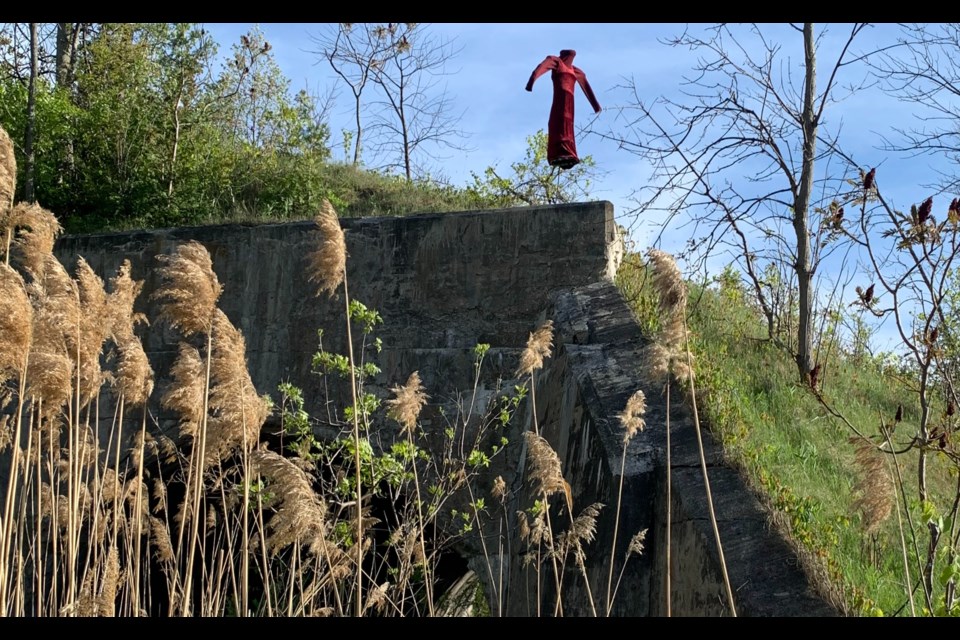Monika Rekola knew she had to do something.
So the Tay Township woman added a blood-red dress at the top of the iconic ‘hole in the wall’ structure located just off Highway 12 between Triple Bay and Reeves roads in northern Simcoe County.
Inspired by Winnipeg artist Jaime Black's evocative art installation, Rekola hopes the symbol gives those passing by time to pause and think about the plight of murdered and missing Indigenous women.
“I feel like we all know someone who has experienced violence in her life, women who feel powerless and who don’t have a voice. (This) brings a connection between all of us,” Rekola says.
“We need to draw attention to the pressing and pervasive issue of violence against Aboriginal women. The power these dresses have to speak for those now gone and to heal those left behind. Many wearers also say red is the only colour that spirits can see," she adds. "They wear it so that the souls of those they’ve lost can be with them.”
Rekola is a yoga instructor who says she has a penchant for righting social injustices in the world, whether they be in India where she has visited three times or right here at home.
“I am a hothead about human rights inequality and have sponsored local village families in need of immediate medicine, rescued street dogs and through many experiences, I have seen that women aren’t well-protected from domestic sexual and economic violence," she says. “Both of these types of violence affect a woman’s safety and freedom.”
The concept traces its roots back a number of years when Black, a Métis multi-disciplinary artist, conceived of the REDress project, which has travelled throughout Canada, to put the plight of Canada's missing and murdered Indigenous women in perspective.
The red dresses are meant to represent the missing and murdered, allowing people to emotionally connect to the staggering number of women who were loved and valued and are now lost.
Red Dress Day, also known as the National Day of Awareness for Missing and Murdered Indigenous Women, Girls and Two-Spirit People, is observed on May 5.
The day honours and brings awareness to the thousands of Indigenous women, girls and two-spirit people who have been subject to disproportionate violence in Canada. Red dresses have become symbolic of the crisis as a result of Black’s installation where she hung empty, red dresses to represent the missing and murdered women.
Rekola says that increasing women’s legal rights keeps them safe and able to build productive happy lives while also reducing human trafficking.
“With better education and job options, women and girls don’t end up in trafficking situations,” she says. “Gender equality can also help strengthen a country by reducing poverty and instability. Anything that I can do personally for one victim, one family or more would be my greatest strength and gift to fellow victims.”
Rekola says more still needs to be done, pointing to statistics from 2021 that show Indigenous women and girls are 12 times more likely to be murdered or go missing than other women in the country and are three times more likely to be a victim of spousal violence.
“In Canada, these women are still begging for safety and to live in dignity as Indigenous women, girls and two-spirit people,” Rekola says. “Advocates and the families of missing and murdered women and girls have said there needs to be a faster response by police and other authorities in their cases.”



